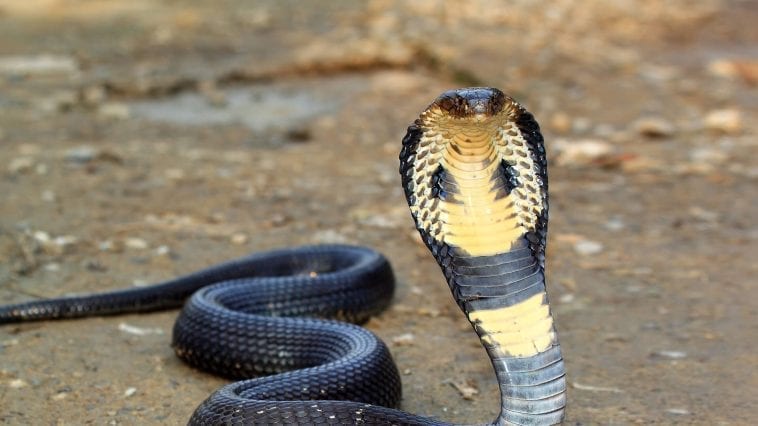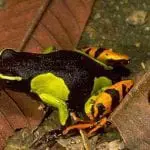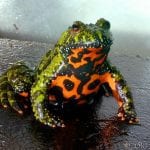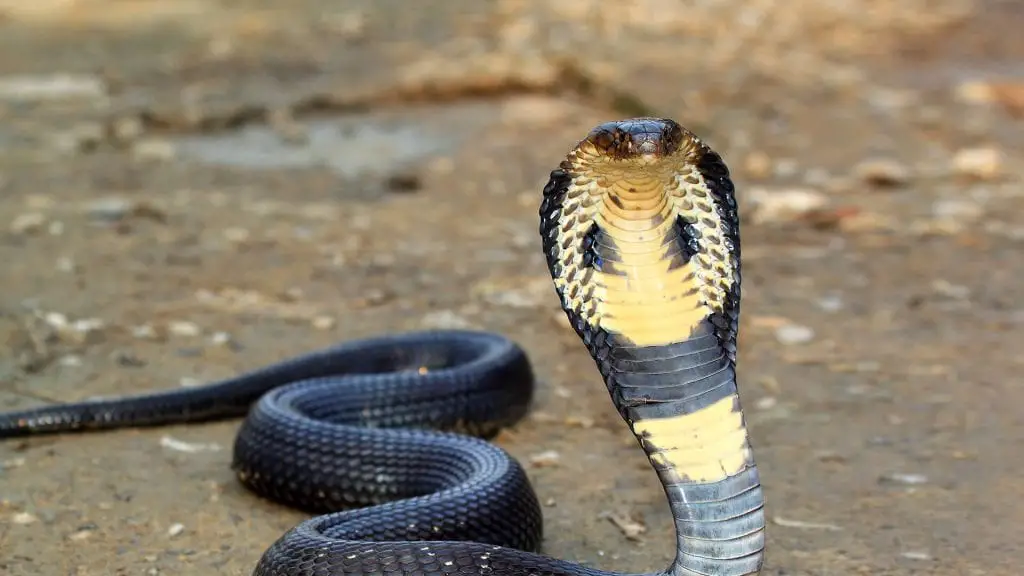
Ask yourself what is the most threatening and terrifying snake on earth. What is the name that first comes to mind? Most probably, you are thinking about the cobra. Cobras are intimidating with their confident postures and upright stances. They are considered to be one of the most iconic snakes to have ever existed. They have this prideful aura that exudes elegance, and they have a venomous bite that can make them feared and respected in the animal kingdom.
Cobras can be found all over Southeast Asia, India, Africa, and the Middle East. The name “cobra” comes from the Portuguese phrase “cobra de capello” which means “hooded snake”. Some people disagree about what actually defines a cobra, and the current number of cobra species ranges from 28 to 260 depending on the criteria that you believe.
If you check genetics, “true” cobras are members of the genus Naja, but the term “cobra” can describe several species of snake, depending on which of them are parts of the Elapidae family of snakes. Elapidae family includes different snakes like kraits, mambas, and coral snakes. Most of these snakes also possess hoods, or they are also equipped to hold and raise up their upper bodies.
Characteristics Of A Cobra
Cobras are Elapids, which means that they are poisonous snakes, and they have hollow fangs that are fixed in position at the top of their mouths. Cobras do not have the ability to hold their fangs down into their prey, so what they do is to use their fangs to inject venom to their target. Cobras also have excellent night vision and a noticeable sense of smell. Aside from having their trademark hoods, cobras have round pupils and smooth scales.
Cobras can come in a different spectrum of colors, and these colors can vary depending on the kind of species. Cobras can come in black, red, mottled, banded, yellow, and other types of shades and patterns.
In terms of size, cobras are large snakes. There are numerous cobra species that reach 2 meters or about 6 feet long. If you will ask the Cape Snake Conservation, the largest true cobra in existence is the forest cobra. It reaches 3 meters or 10 feet. In terms of spitting cobras, the largest in the world is the Ashe’s spitting cobra. It measures 2.7 meters or 9 feet. The smallest cobra is known to be the Mozambique spitting cobra, and it measures about 4 feet long. On the other hand, the King cobra is the longest of all snakes and it measures 5.5 meters or 18 feet.
For cobras, their most distinguishing characteristic is their unique hood. Hooding can be defined as the occurrence where the snake spreads out its neck ribs so that they can form a flattened and widened section of their body that is very near its head. Having a hood makes a very stunning and threatening feature to behold.
Where Do Cobras Live?
Cobras typically reside in hot and tropical areas, but they can also be seen residing in forests, grasslands, savannahs, and farming areas in Asia and Africa. Cobras enjoy spending time under the ground, under some rocks or high up in trees.
What Are The Known Habits Of Cobras?
There are many things that you can know about cobras. The most distinctive behavioral characteristics of cobras are their defensive habits. These defensive behaviors include hissing, hooding, and raising the upper portion of their bodies to stand erect. Most cobras can stand as tall as a third of their body’s length. Cobras do this behavior so that they can express their interest and willingness to attack their prey. But, unbeknownst to many people, this behavior is also used by cobras to help them search for food.
Some cobras also hiss loudly at other predators and other threats around them. Some cobra species also spit as a defense mechanism. Spitting cobras utilize this ability to project their venom from their fangs into their targeted predators.
Cobras also begin reproduction by laying some eggs. The females of these species lay 20 to 40 eggs at one time, which incubate between 60 to 80 days. Cobras also have earned their behavior of staying near their eggs, guarding, and protecting them until the day that they hatch.
There are many predators of snake eggs, including mongooses and wild boars. Mongooses are the most famous enemy of the cobras. They are equipped with thick fur, which means it is very hard for cobras to infiltrate their skins with venom. These mongooses can also defeat their cobra enemies using their speed and agility. These animals can also bite the cobra’s back before the snake can even start defending itself. Aside from the mongoose, cobras are also afraid of humans and other species of snakes.
On the opposite part of the food chain, cobras are very opportunistic hunters. They decide to eat whatever prey that comes their way. Most of the time, cobras eat eggs, carrion, lizards, small mammals, birds, and other snakes. Cobras tend to slither their way throughout the wilderness in a silent and peaceful way, slowly following their target until they are ready to attack. Most cobras prefer to start their hunt either at dawn or at dusk, though there are still many individuals that are known to forage along the forest during the heat of the day.
When they feed, cobras behave similarly to other snakes. They have an extremely slow metabolism, which means that after a hefty meal, the cobras can go for days and even months without having to feed.
How Should You Deal With A Cobra Bite?
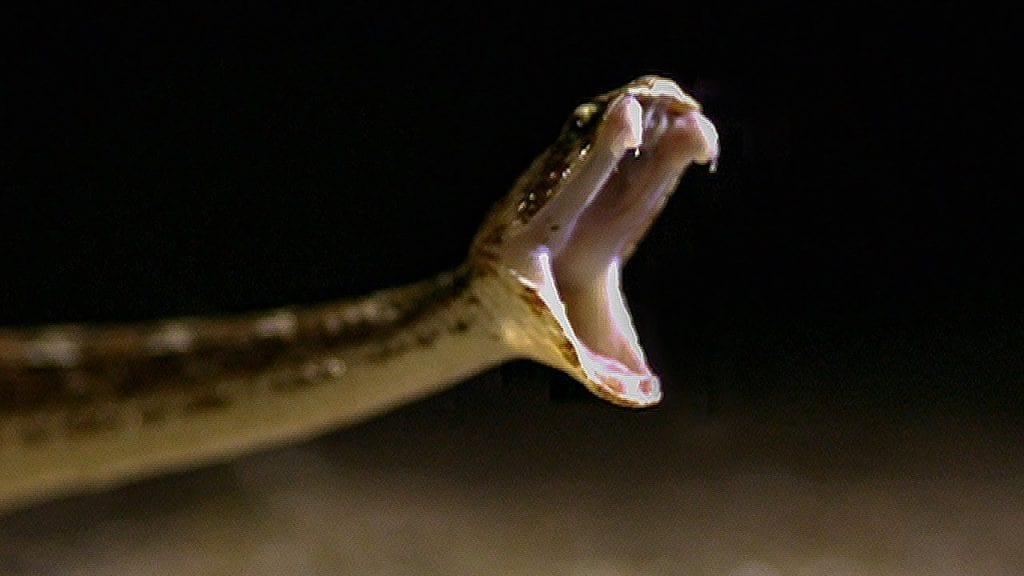
If you get bitten by a cobra, you must know that a cobra bite can become fatal, especially if you leave the wound untreated. Fortunately, there is a way to get antivenin. There are also cases where lives can be saved even after a cobra bite through the use of an artificial respirator.
The neurotoxic system of a cobra has these effects. Coral snakes have very potent neurotoxic venom, which directly affects the nervous system. From a cobra bite, a person might be exposed to these symptoms: abdominal pain, anticoagulation, necrosis, vomiting, respiratory failure, difficulty in breathing, skeletal muscle weakness, difficulty in swallowing, difficulty in speaking, and vision problems.
Some species of cobras, including all types of spitting cobras, possess cytotoxic venom that attacks body tissue and cause their victims extreme pain. This type of venom comes with swelling, intense pain, and death of tissues and cells or necrosis. Spitting cobras also have the ability to shoot venom directly into the eyes of their victim with surprising accuracy. Putting venom in the eyes can lead to blindness if this is not washed out well.
The Most Venomous Types of Cobra
1. Caspian Cobra
The most venomous species of cobra in the world and is mostly found in Iran, Afghanistan, Pakistan, Kyrgystan, Turkmenistan, Uzbekistan, and Tajikistan. The untreated mortality rate of this snake is 70 to 75 percent.
2. Philippine Cobra
This highly venomous snake is native to the northern part of the Philippines. It is a spitting type of cobra, and it normally resides in crop fields, dense jungles, human settlements, grasslands, and low-lying plains.
3. Samar Cobra
Another cobra that is residing in the Philippines is this extremely venomous snake is native to Visayas and Mindanao regions of the country. These cobras are known for feeding on frogs, rodents, and other reptiles. This cobra is famous for being nervous and skittish, which means it sprays venom quicker than others.
4. Forest Cobra
This snake lives in Central and Western Africa. They are known to live in savannas, lowland forests, and other drier ecoregions. These snakes are always on high alert, and the power of their venom can work within 30 to 120 minutes after the bite.
5. Indochinese Spitting Cobra
This species of cobra lives in Southeast Asia, particularly in Cambodia, Laos, Vietnam, and Thailand. This snake is quiet during the daytime, but it gets braver during the nights. The venom of this cobra consists of a mixture of cytotoxin and neurotoxin.
6. Chinese Cobra
This cobra lives in the mangroves, shrublands, woodlands, and grasslands of Southern China and some neighboring countries. These snakes can become aggressive when confronted and they can strike right away.
7. Indian Cobra
This snake is one of the most venomous snakes and is a member of the top 4 snakes responsible for snake injuries in the country. The Indian Cobra is highly revered in Hinduism and is celebrated in the Nag Panchami festival.
8. Cape Cobra
This cobra is endemic to Southern Africa, where it resides in bushvelds, deserts, savannas, and semi-deserts. This snake hunts during the day and is known for visiting human homes aside from their terrifying venom.
9. Monocled Cobra
This type of cobra is widespread throughout the South to Southeast Asia. They are highly poisonous and their venom is a complex mixture of cardiotoxins, myotoxins, and neurotoxins.
10. Equatorial Spitting Cobra
This Southeast Asian cobra is found living in the countries of Brunei, Indonesia, Malaysia, Philippines, Thailand, and Singapore. They live in the high trees of the forest but they are also known to frequent human settlements.

